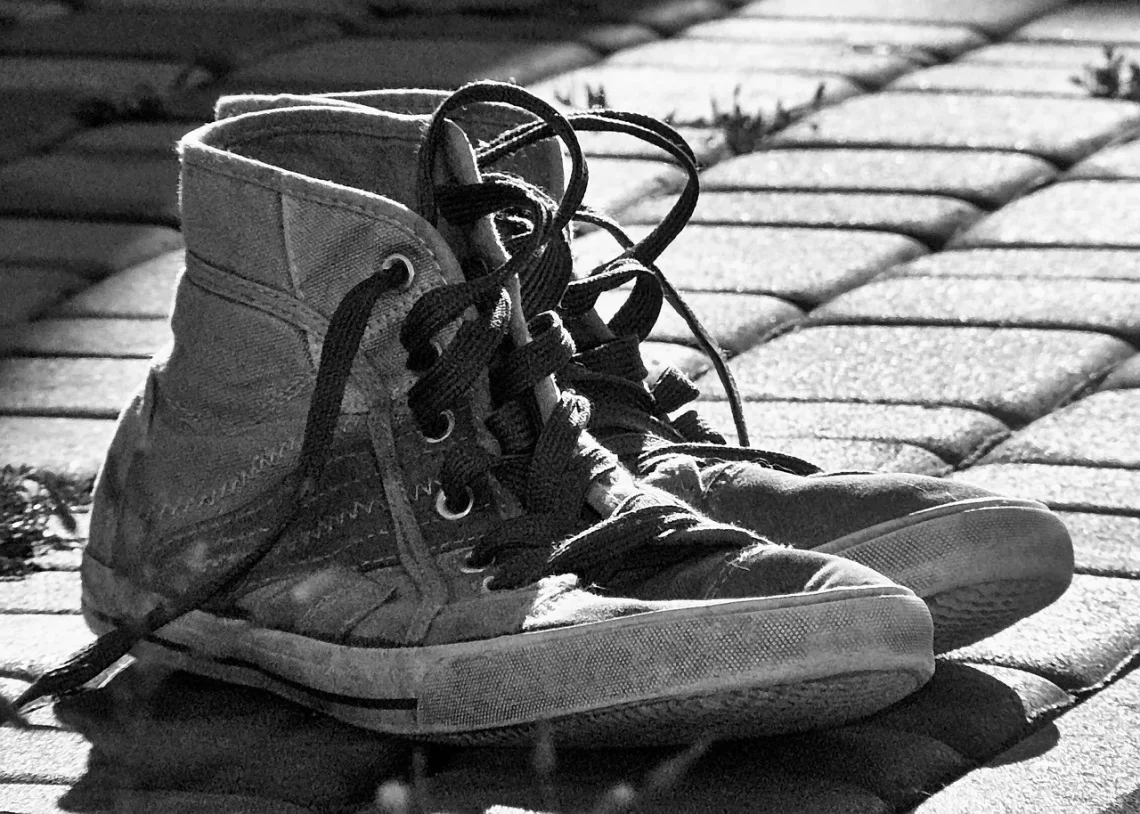
Best Footwear Options to Relieve Achilles Tendonitis Pain
Achilles tendonitis is a common condition that affects many individuals, particularly those engaged in athletic activities or repetitive strain movements. This inflammation of the Achilles tendon, which connects the calf muscles to the heel bone, can result in significant discomfort, limiting one’s ability to partake in daily activities or sports. The pain often radiates along the back of the heel and can worsen with certain activities, making it crucial for those suffering from this condition to find effective solutions to manage their symptoms.
One of the most impactful ways to alleviate the pain associated with Achilles tendonitis is by selecting the right footwear. The shoes we wear play a crucial role in providing the necessary support, cushioning, and stability required to minimize strain on the Achilles tendon. Poor footwear choices can exacerbate the issue, leading to increased discomfort and prolonged recovery times. Thus, understanding the characteristics of suitable footwear can empower individuals to make informed decisions, paving the way for a smoother path to recovery.
In this article, we will explore various footwear options that can help relieve the pain associated with Achilles tendonitis, focusing on features that specifically cater to this condition. By carefully considering the design and functionality of shoes, individuals can take proactive steps towards managing their symptoms and enhancing their overall foot health.
Importance of Arch Support in Footwear
Choosing shoes with proper arch support is vital for anyone dealing with Achilles tendonitis. The arch of the foot plays a significant role in weight distribution and shock absorption while walking, running, or engaging in any physical activity. When the arch is not adequately supported, it can lead to misalignment, putting additional strain on the Achilles tendon.
Footwear that offers excellent arch support helps maintain the natural alignment of the foot, reducing the risk of overpronation. Overpronation occurs when the foot rolls excessively inward during movement, which can place undue stress on the Achilles tendon and surrounding structures. Shoes designed with built-in arch support or those that accommodate custom orthotics can significantly alleviate this issue.
Additionally, the right footwear can help distribute pressure evenly across the foot, minimizing hotspots that can lead to discomfort. Look for shoes with a contoured footbed that cradles the arch and offers cushioning in the heel area. Brands that specialize in orthopedic or sports footwear often provide options specifically designed for individuals with arch issues, making it easier to find the right fit.
It’s also essential to consider the material and construction of the shoe. Shoes made from breathable materials can help regulate temperature and moisture levels, which is particularly beneficial for those who experience swelling or discomfort. A well-structured shoe will also feature a firm heel counter that helps stabilize the heel and prevents excessive movement, further reducing the strain on the Achilles tendon.
In conclusion, investing in footwear with proper arch support is a crucial step for individuals suffering from Achilles tendonitis. By ensuring that the shoes provide adequate support, alignment, and pressure distribution, one can significantly reduce the pain and discomfort associated with this condition.
Cushioning and Shock Absorption Features
Cushioning and shock absorption are critical components in footwear for those struggling with Achilles tendonitis. The impact of each step can reverberate through the body, especially for individuals with inflamed tendons. Therefore, choosing shoes that effectively absorb shock can help mitigate the stress placed on the Achilles tendon during movement.
Footwear featuring advanced cushioning technologies, such as gel pads or foam inserts, can significantly reduce the impact experienced by the feet and lower legs. These materials are designed to compress and then return to their original shape, offering a responsive feel that can adapt to the user’s weight and movements. As a result, they provide a soft landing for each step, which is essential for reducing the strain on the Achilles tendon.
Moreover, shoes that have a higher heel-to-toe drop can also aid in alleviating pressure on the Achilles tendon. A higher drop means that the heel is elevated compared to the forefoot, promoting a more natural gait and reducing the strain during toe-off. This design feature can be particularly beneficial for individuals who experience pain when pushing off from the toe.
It’s also worth noting that the outsole of the shoe should be designed to enhance traction without compromising flexibility. A flexible shoe allows for natural foot movement, while good traction prevents slips and falls, which can lead to further injury.
Ultimately, footwear that combines effective cushioning with a higher heel-to-toe drop can create a comfortable walking or running experience, significantly aiding in the management of Achilles tendonitis symptoms. The right shoes can help individuals maintain an active lifestyle while minimizing pain and discomfort, making it easier to engage in rehabilitation exercises essential for recovery.
Choosing the Right Fit and Style
Finding the right fit is perhaps one of the most crucial aspects of selecting footwear for Achilles tendonitis. Shoes that do not fit properly can lead to a variety of problems, including blisters, calluses, and increased pain in the Achilles tendon. A proper fit ensures that the shoe provides adequate support and cushioning without causing unnecessary friction or pressure on sensitive areas.
When trying on shoes, it’s essential to consider both the length and width. The shoe should allow for a thumb’s width of space between the toes and the front of the shoe. This extra space prevents the toes from being cramped, which can lead to discomfort, particularly during physical activities. Additionally, the shoes should be wide enough to accommodate the foot without feeling tight, as this can cause the foot to swell and exacerbate pain.
Another important factor to consider is the style of the shoe. While athletic shoes are often recommended for their supportive features, other styles may also offer the necessary support for those with Achilles tendonitis. For instance, walking shoes, sandals with arch support, and even certain dress shoes can be suitable options if they are designed with comfort and support in mind.
It is also advisable to try on shoes later in the day when the feet are slightly swollen, as this will provide a more accurate representation of how the shoes will feel during daily activities. When testing shoes, walk around to assess comfort levels, paying attention to any areas that may rub or pinch.
In summary, the right fit and style of footwear are vital for individuals suffering from Achilles tendonitis. By prioritizing comfort, support, and proper sizing, one can significantly reduce pain and promote healing, allowing for a more active and fulfilling lifestyle.
Considerations for Specialty Footwear
In addition to standard footwear options, those suffering from Achilles tendonitis may benefit from specialty footwear designed specifically for their condition. These shoes often incorporate advanced technologies and features aimed at providing optimal support and comfort for individuals with foot and ankle issues.
One popular option is orthopedic shoes, which are constructed with the unique needs of individuals with foot problems in mind. These shoes typically feature wider toe boxes, enhanced arch support, and cushioned insoles, all of which can contribute to pain relief. Many orthopedic shoes are also customizable, allowing for the addition of orthotic inserts tailored to an individual’s specific foot shape and support requirements.
Another innovative option is footwear designed for recovery, often referred to as recovery sandals or shoes. These shoes are typically lightweight and feature soft, cushioned soles that promote relaxation and comfort after physical activity. They can be particularly beneficial for individuals recovering from Achilles tendonitis, as they allow for breathability and ease of movement while providing the necessary support.
Additionally, there are brands that focus on shoes specifically designed for runners with Achilles tendonitis. These shoes often come with features such as a higher heel drop, extra cushioning, and reinforced heel counters to reduce strain on the Achilles tendon. Investing in such specialized footwear can be a game-changer for athletes looking to maintain performance while managing their condition.
Ultimately, exploring specialty footwear options can provide individuals with additional resources to relieve pain and promote healing. By selecting shoes designed with their specific needs in mind, those suffering from Achilles tendonitis can enhance their comfort and support, making it easier to engage in daily activities and sports.
—
**Disclaimer:** This article is for informational purposes only and should not be considered medical advice. Please consult with a healthcare professional regarding any medical concerns or conditions.




